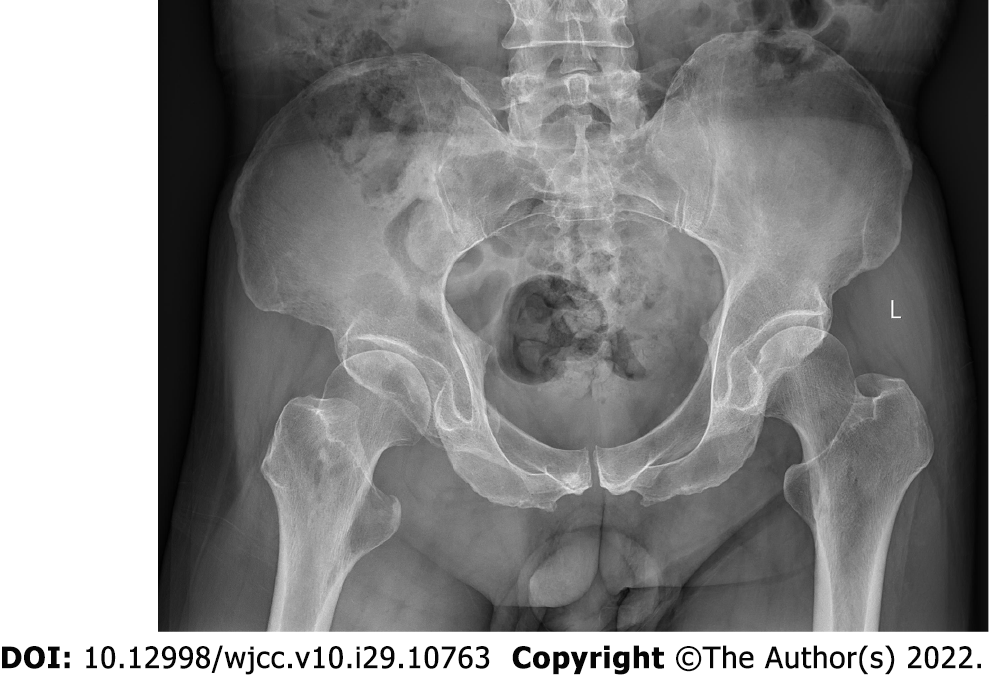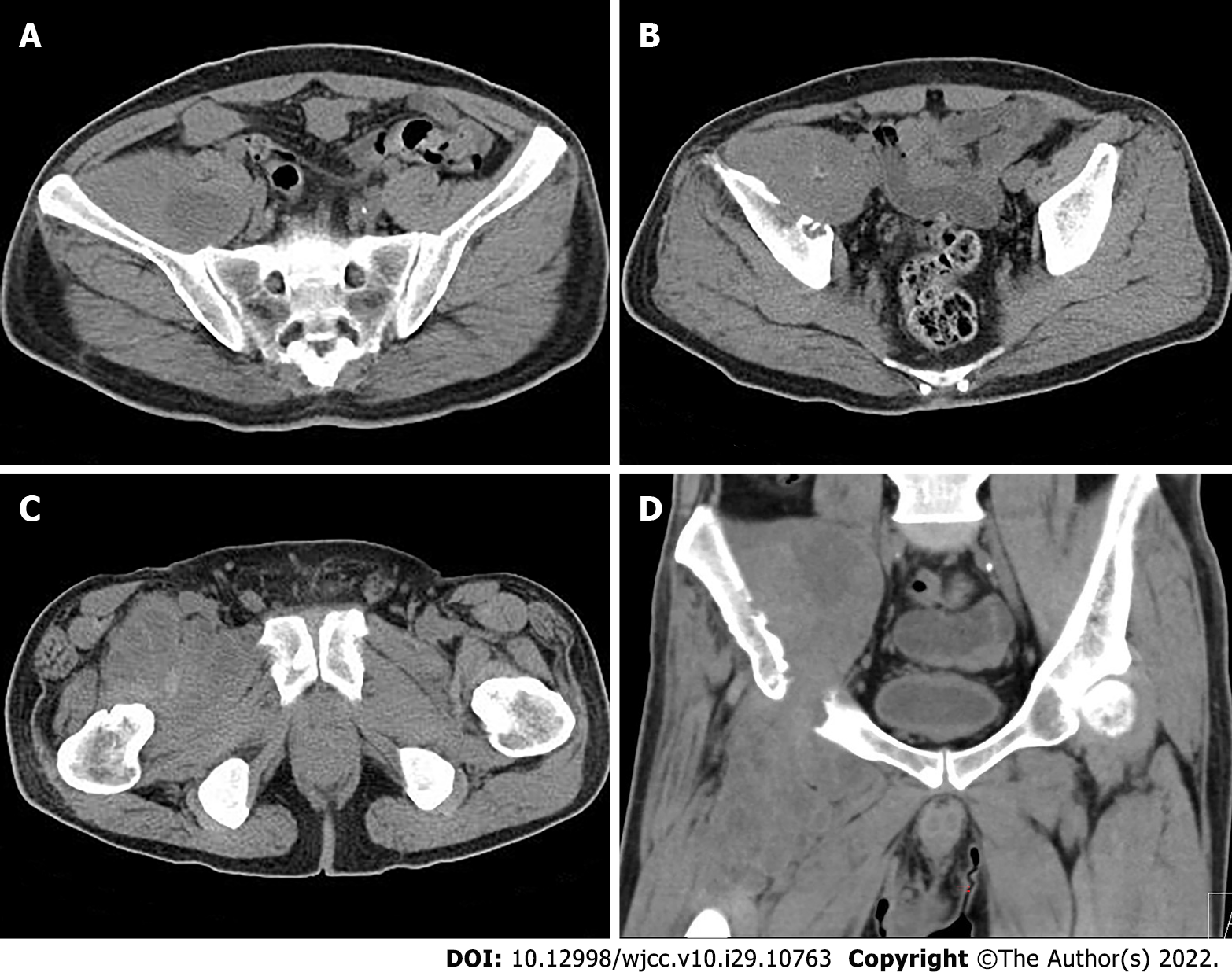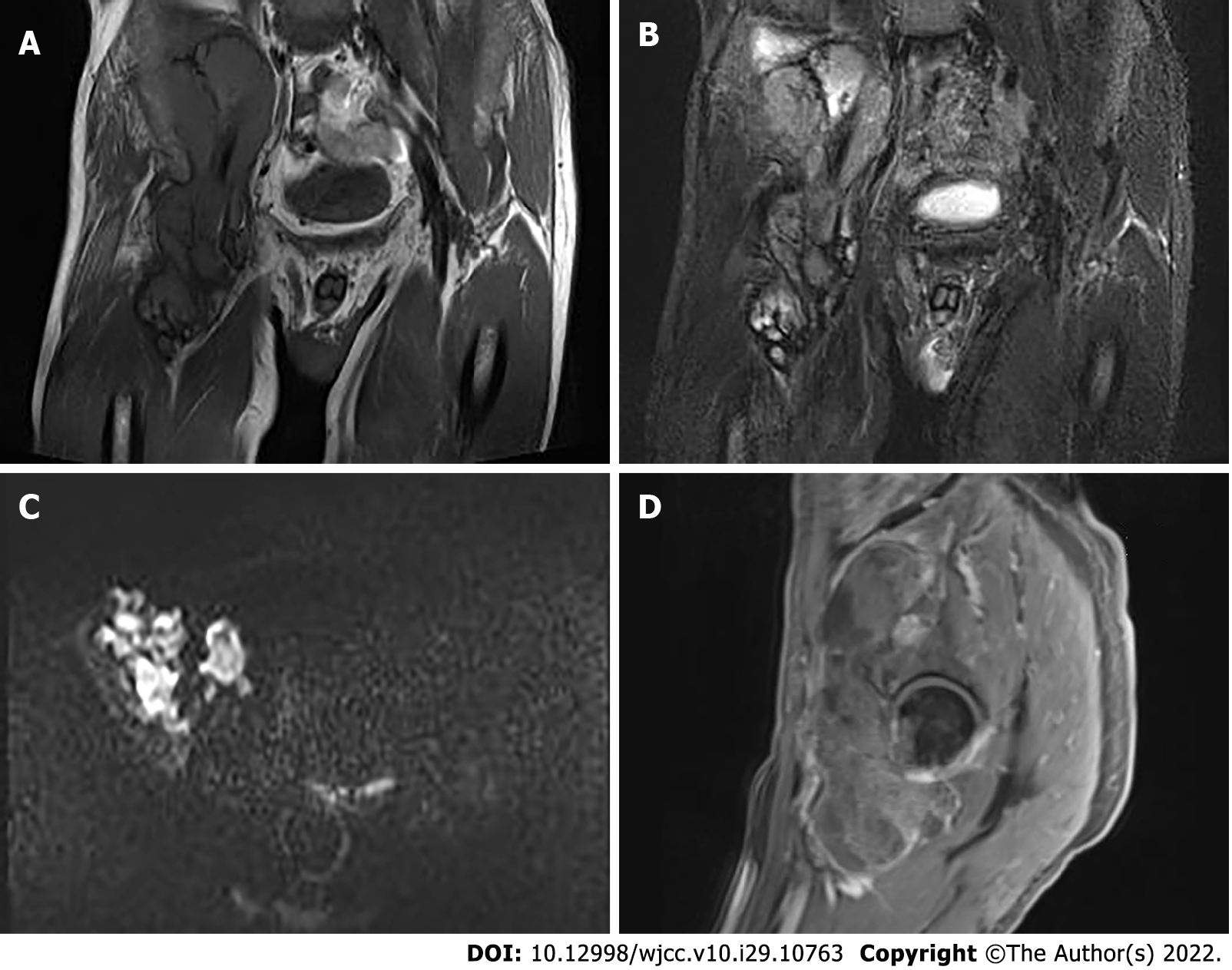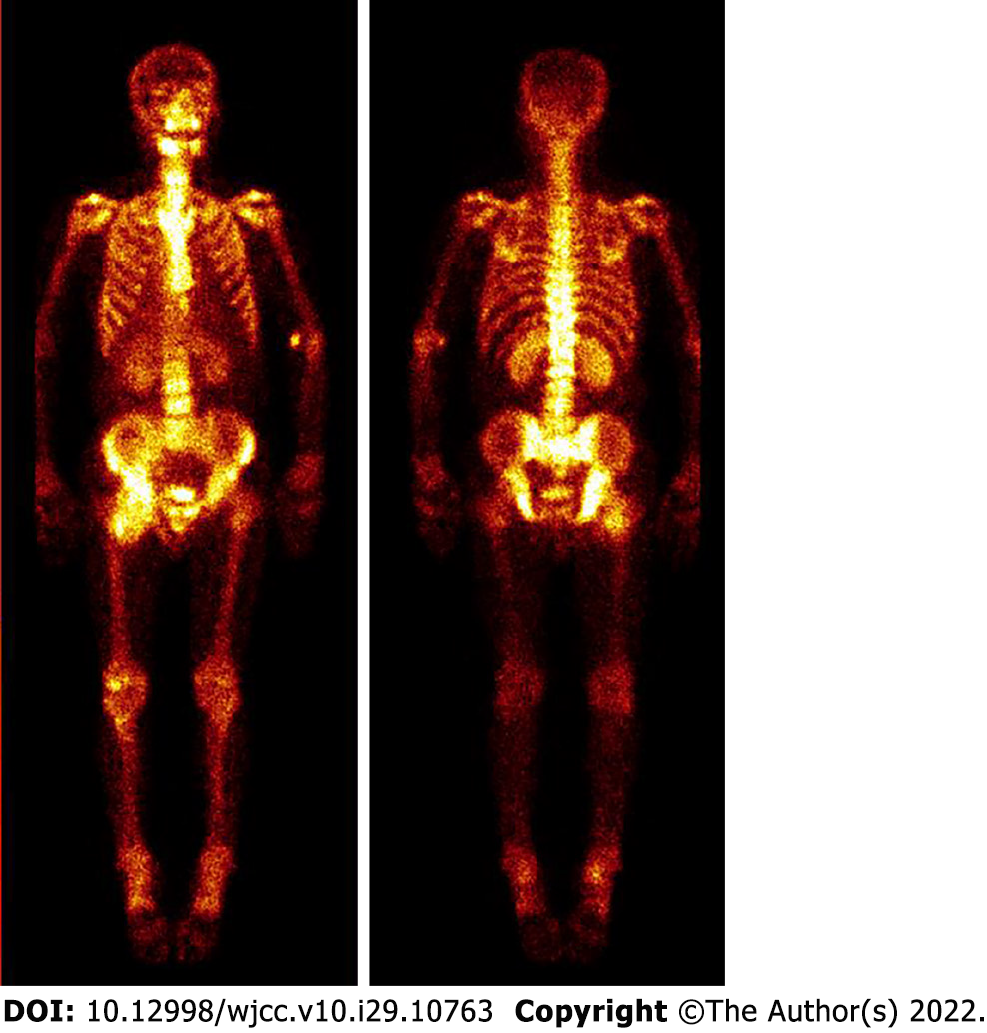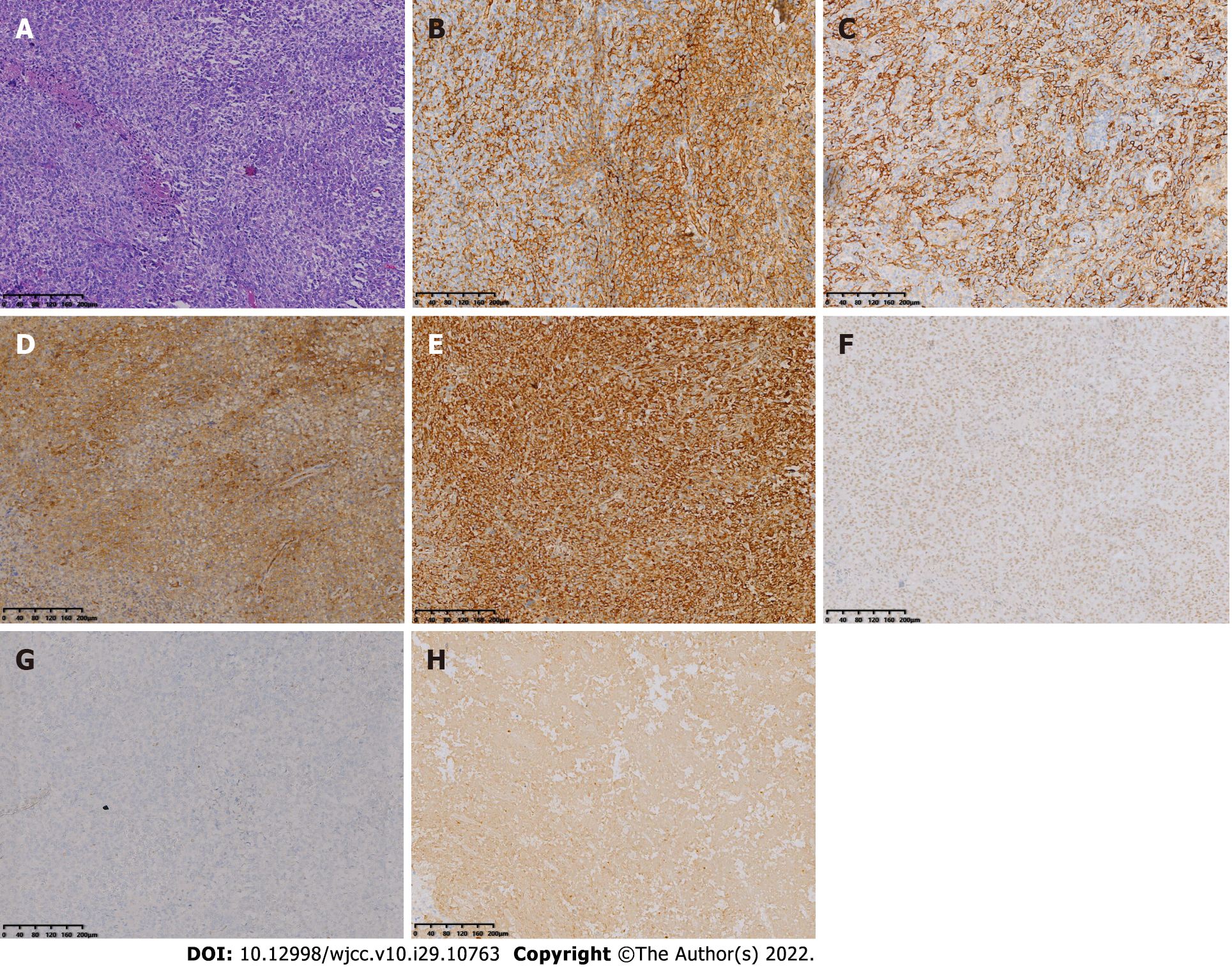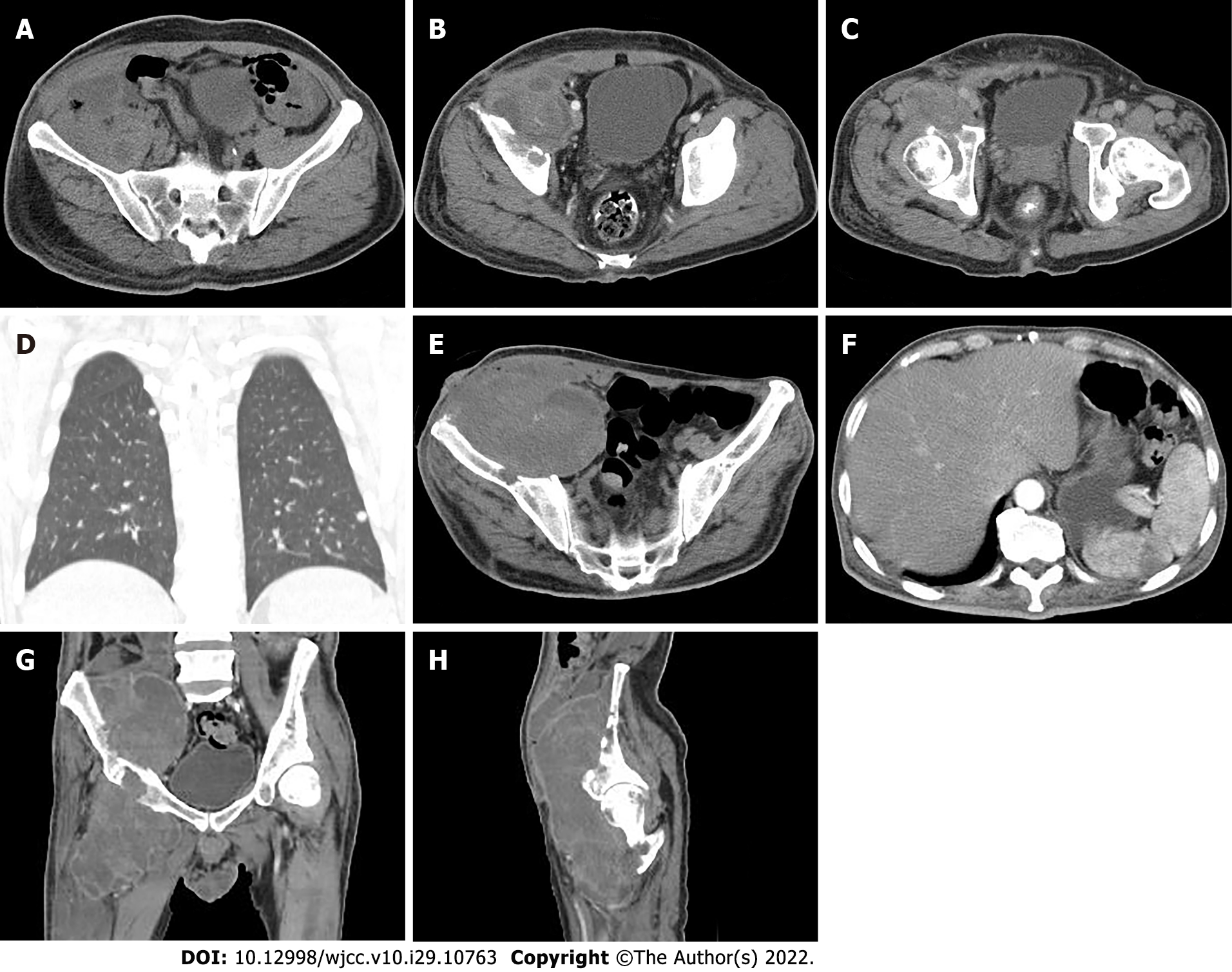Copyright
©The Author(s) 2022.
World J Clin Cases. Oct 16, 2022; 10(29): 10763-10771
Published online Oct 16, 2022. doi: 10.12998/wjcc.v10.i29.10763
Published online Oct 16, 2022. doi: 10.12998/wjcc.v10.i29.10763
Figure 1 Pelvis radiography.
Multiple cystic hypodense lesions with variable sizes and well-defined borders were shown in the right iliac bone and right upper femur, suggesting osteolytic bone destruction.
Figure 2 Computed tomography of the pelvis reveals a soft tissue mass in the intermuscular space anterior to the right iliopsoas muscle and the right upper femur.
A: The mass showed soft tissue density with lamellar hypodense necrosis inside; B: Osteolytic bone destruction of the right iliac bone was displayed clearly; C: The mass had poorly defined margins; and D: The massive tumor growed along the tendon.
Figure 3 Magnetic resonance imaging of the hip.
A: Inhomogeneous moderate hypointensity on coronal T1-weighted images; B: Mixed mild hyperintensity on coronal fat-saturated T2-weighted images; C: Inhomogeneous hyperintensity on axial D-weighted images; and D: Heterogeneous mild ring enhancement of the lesion on sagittal T1-weighted images after contrast administration.
Figure 4 99mTc-methylene diphosphonate whole-body bone scan.
Multiple high radioactive lesions were demonstrated along the right ilium, acetabulum and proximal femur, which were correlated with computed tomography and magnetic resonance imaging findings.
Figure 5 Histopathological images.
A: Hematoxylin-eosin (HE) staining showed that the tumor was composed of mononuclear synovial-like cells and sarcoma cells. Lacunar-like lacunae were shown within the tumor cells and pleomorphism and heterogeneity of the tumor cells were obvious. Pathological nuclear division was seen and a collagen matrix was found between the cells (magnification ×100); B: Immunohistochemical staining revealed CD31 positivity (Envision, 100×); C: Immunohistochemical staining revealed CD34 positivity (Envision, 100×); D: Immunohistochemical staining revealed CD99 positivity (Envision, 100×); E: Immunohistochemical staining revealed Vimentin positivity (Envision, 100×); F: Immunohistochemical staining revealed INI-1 positivity (Envision, 100×); G: Immunohistochemical staining revealed TLE1 positivity (Envision, 100×); H: Immunohistochemical staining revealed CK positivity (Envision, 100×).
Figure 6 Computed tomography monitoring after chemotherapy.
A-D: 1 mo and 7 d after the initial diagnosis; A: The lesion was larger in size than before and the adjacent abdominal wall was unevenly thickened; B: There were an increased amounts of necrosis lesions; C: The lesion invaded the acetabulum; D: Small and round solid nodules were found in both lung lobes; E-F: 5 mo and 20 d after the initial diagnosis; E: Thinning of the right abdominal wall with a skin fistula was caused by the mass; F: A patchy, hypodense infarcted area in the spleen represented a metastatic lesion; G: Further enlargement of the lesion; and H: Multiple osteolytic destruction was shown in the right ilium, acetabulum, and proximal femur.
- Citation: Huang WP, Gao G, Yang Q, Chen Z, Qiu YK, Gao JB, Kang L. Malignant giant cell tumors of the tendon sheath of the right hip: A case report. World J Clin Cases 2022; 10(29): 10763-10771
- URL: https://www.wjgnet.com/2307-8960/full/v10/i29/10763.htm
- DOI: https://dx.doi.org/10.12998/wjcc.v10.i29.10763













